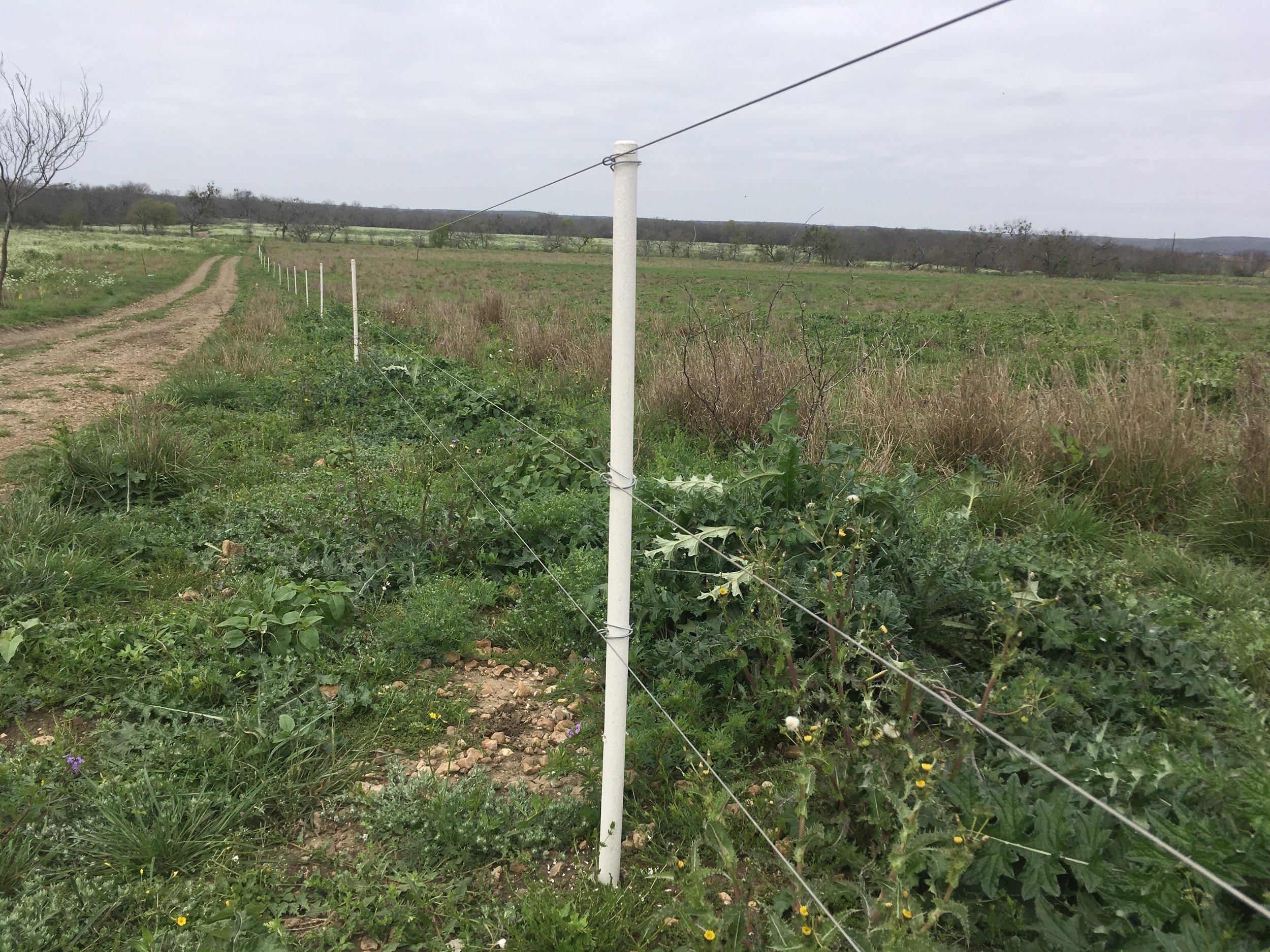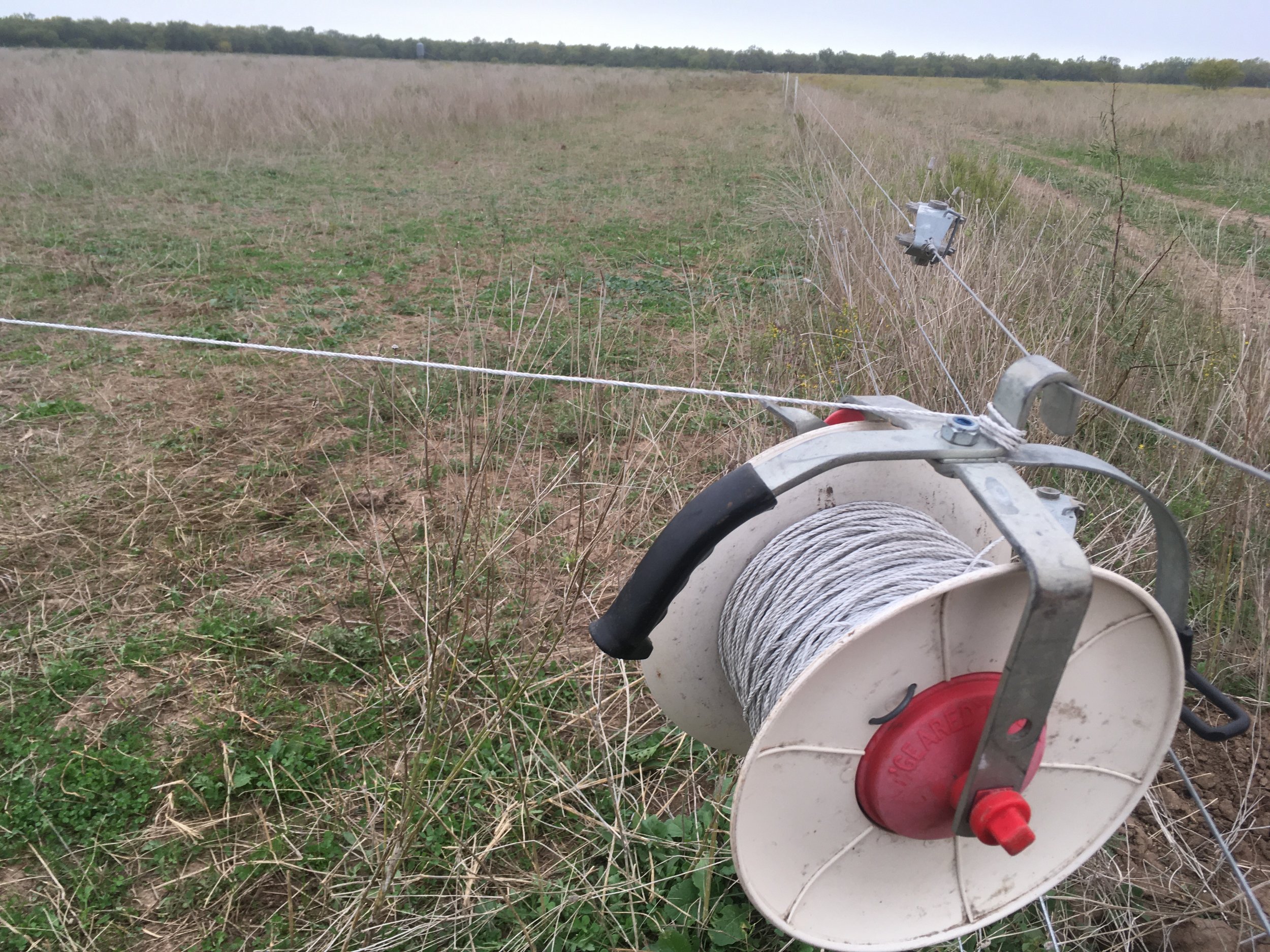Electric fencing for livestock: economical & effective
Electric fencing conjures a lot of emotions with farmers and ranchers. Some love it while others absolutely hate it. I believe those that hate it have never been taught or educated on how to effectively use electric fence. We love it at Parker Creek Ranch. There are miles of semi-permanent electric fence throughout our ranch. For our operation it has been a game changer. It is a economical and cost effective solution to creating a better management system. I will attempt to describe our electric fencing system and the hacks I have learned along the way.
Let’s start at the beginning: the charger (also known as energizer). There are several options including AC or DC. One is powered a battery and solar panel while the other is powered by a 120/220 V outlet. Currently the solar energizers on the marketplace are really good. They are significantly better than they were say ten years ago, but when it comes to power and reliability they don’t come close to touching the AC energizers. My favorite brand is Gallagher. Gallagher produces quality, reliable energizers with great customer service should you have any problems. Gallagher just introduced the worlds most powerful charger with a brute force of 100 stored joules. This baby will knock a cows hooves off! Equally as important as a good energizer is proper installation. Consider these tips:
use the proper number of ground rods spaced at ten foot intervals,
size the ground wire according to your chargers specs,
make sure you have a lightning arrestor to protect your investment,
and protect your charger (a valuable investment) from the sun and elements with ample cover (this may be inside a shed or a lean to).
The next step is building your semi-permanent fences that will be used to break up the property for better grazing management. I like to have a minimum of 8 pastures on a ranch, but 16 or more is preferable. Within these semi-permanent pastures we use temporary electric fencing to create even more paddocks. Our semi-permanent fences are built with simple tools that anyone can learn to use. There are no special skills required to build these fences. I use 14 gauge aluminum wire made by Gallagher instead of traditional galvanized steel wire. It has several advantages including better conductivity, will never rust (meaning it lasts forever), one-third the weight of steel, greater flexibility making it easier to work with and the wildlife (mainly deer we are concerned about) can see it better at night due to its reflective abilities. The number of wires you use will depend on what species of livestock you are grazing. For cattle I like to have at least one positive and one ground wire in our arid environment. When grazing sheep I install three additional wires on the bottom (from the ground up 8-6-8) including two hot wires and one ground.
I don’t use steel for any of my posts. I prefer to use cedar posts for the h-braces and corner posts, but any type of wood post will suffice. Just make sure it’s a type of wood that is rot and insect resistant. We have some old cedar posts still functioning on our ranch that are over 100 years old. For the line posts I use PasturePro. These are a wood composite post, not traditional fiberglass. Do not use fiberglass posts or steel rebar. PasturePros are manufactured in Missouri and are the best permanent electric fence post on the market. These posts are self-insulating, tough, fleixible and guaranteed with a 20-year warranty. They have a nice solid profile and they are easy to install with a post driver. No insulators required, simply use a stainless steel $0.08 cotter pin pin to attach the wire. I think they might last longer than 20 years, but we shall see. I have some that are about five years old and they look just as new as the day we installed them.
A few things that have really stood out to me over the years:
Don’t use steel for you fence posts, that includes h-braces, corners and line posts
Use ceramic insulators, no plastic (plastic doesn’t last long in the sun)
Purchase good, quality equipment that will last a lifetime
Take your time to properly install the charger
Come up with a good, solid grazing plan and design your fencing system around that
Create flow with your grazing system
The watering system is just as important as the fencing
Good software for managing this system is invaluable
I purchase all of my insulators, strainers, wire and other supplies at Kencove or my local farm store if they carry the brands I like. This fence design with two strands of wire (one hot, one ground), which is ample for cattle costs around $1280/mile before labor. It is the most economical and effective way to contain livestock that I know of. I wouldn’t recommend it for your perimeter fences. Perimeter fences should be net wire or barbed permanent fencing.
That’s all for today. I know I’m leaving you with questions. What do I use for temporary cross fences? How do you get water to all of these pastures? What are your perimeter fences like? How do I choose where to install fences? Does it take a lot of time? We will cover these soon in another blog.
Do you need help designing your fencing and watering system? Have you developed a grazing plan or are you stuck in the same old rotation? We can help you with that! Contact us for consultation inquiries and rates.









